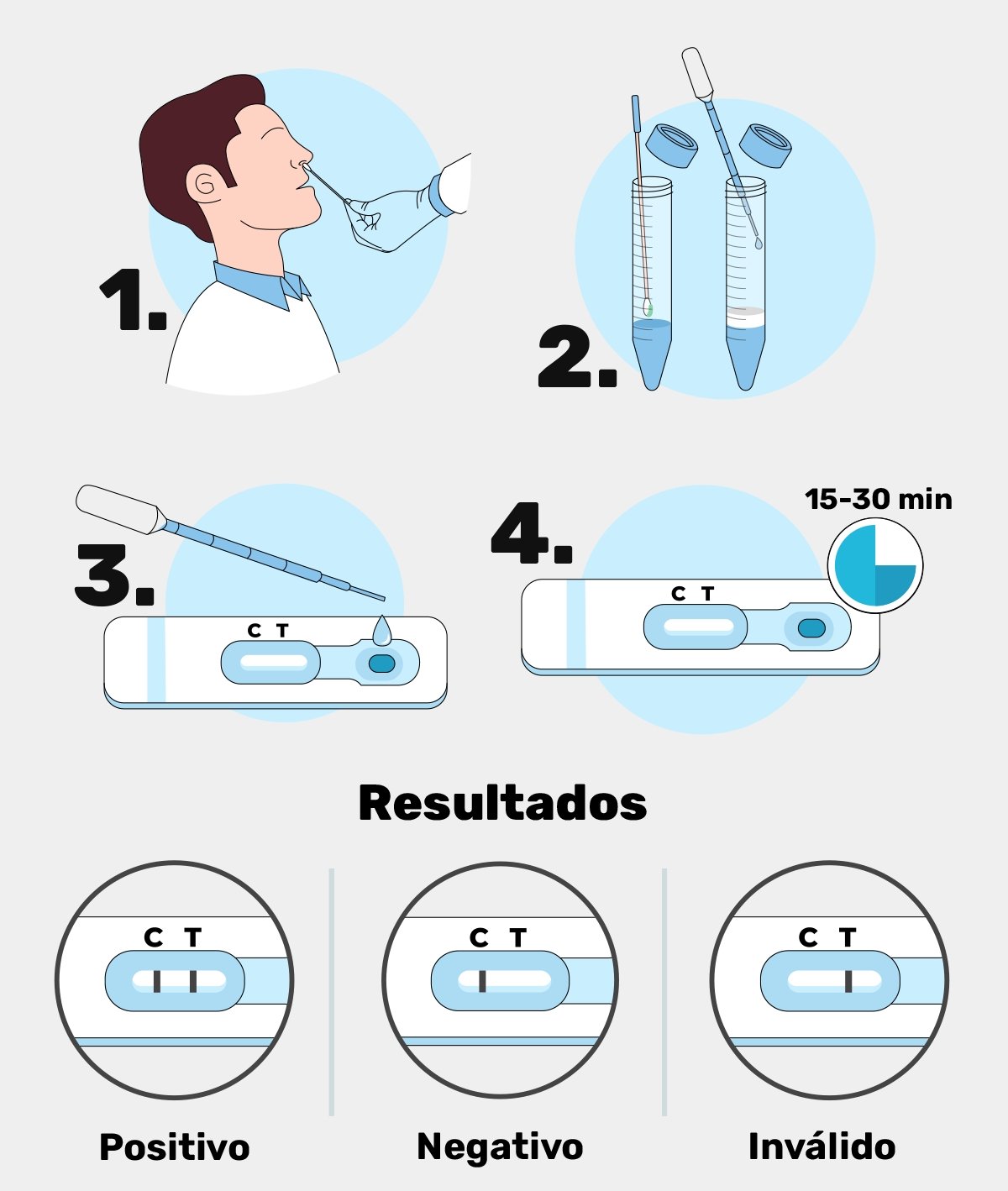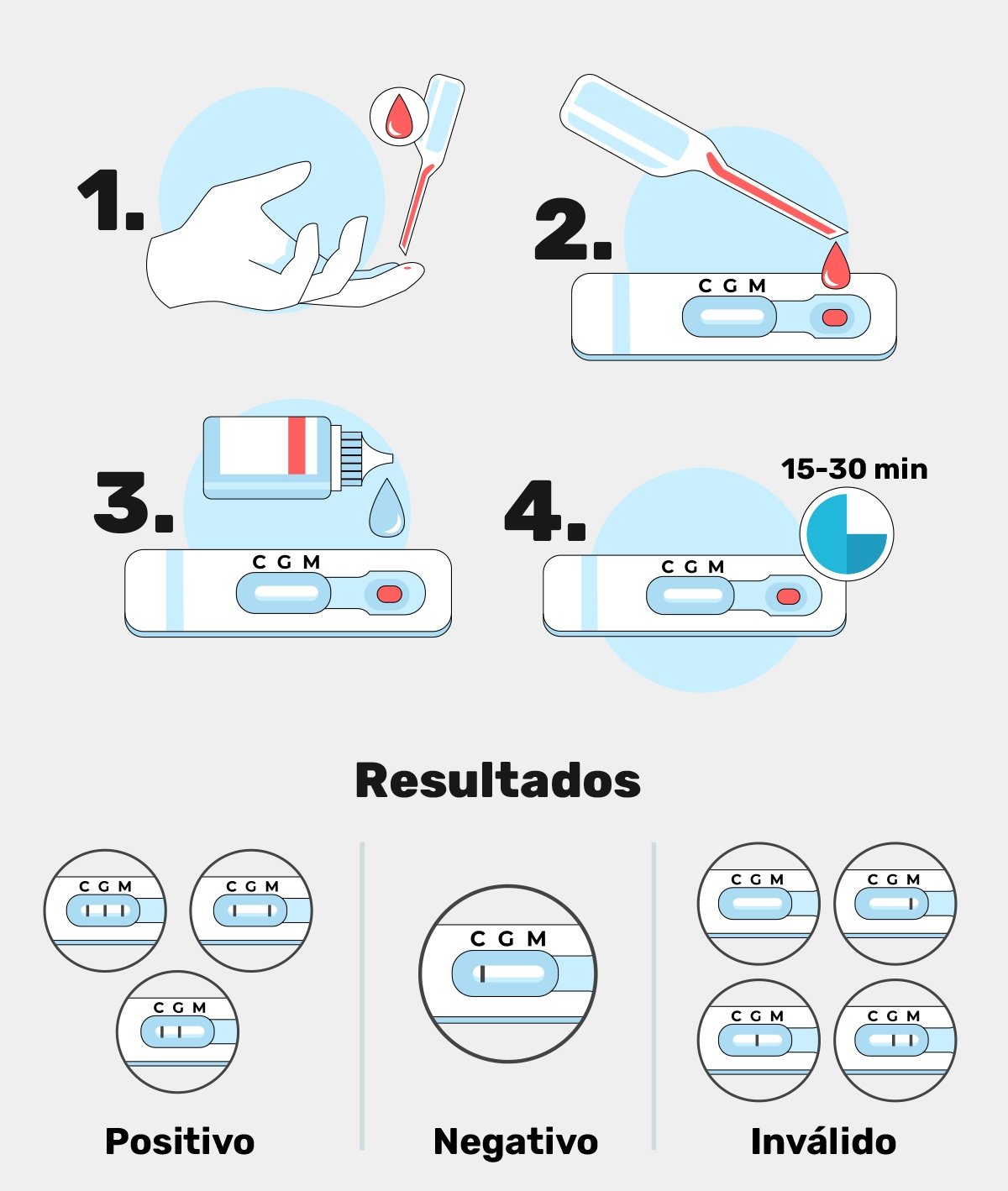The COVID rapid test allows testers to know within minutes if they are infected with the coronavirus. There are two main types of COVID rapid tests: the antigen and the antibody test.
These tests can be done at pharmacies or at home, and results are usually obtained within 15 minutes. There is no need to send specimen to a laboratory for analysis with special equipment.
COVID rapid tests are not considered to be diagnostic in nature by the WHO. Instead, their purpose is to determine whether the tester has been in contact with the coronavirus. To diagnose COVID-19, the recommended test is the PCR test.
1. Rapid antigen test

What it indicates: Whether an active COVID-19 infection is present. The results should be confirmed by a PCR test however.
How to perform: A saliva or nasal secretion specimen is collected using a swab. The specimen is then diluted in a special liquid and dropped into a plastic container, similar to a pharmacy pregnancy test. If the virus is present, the test strip will change color, or two strips will appear.
The rapid antigen test can be done at pharmacies, testing centers and in laboratories. It can be be performed by health care professionals or by yourself at home, as long as you follow all instructions carefully to avoid error.
How to interpret results: After 15 to 30 minutes, if the absorbant strip presents with a line in the "T" field, even if it is faint, this is considered to be a positive result, If you just see a line in the "C" field and nowhere else, this is considered to be a negative reuslt. If there are no lines present, the test is considered to be invalid.
How it works: This COVID rapid test detects the presence of coronavirus proteins, which are antigens, Antigens are present only when the coronavirus is actively multiplying.
Is is important to highlight that the results of this test are not altered by vaccination. This is because the vaccine only exposes a small amount of the virus to the immune system, which is not significant to be identified in the antigen test.
2. Rapid antibody test

What it indicates: Whether the person carries antibodies of this virus, which can indicate that he or she have been in contact with a person with COVID-19 at any point.
How to perform: This test is done by collecting a drop of blood from the finger. This specimen is then placed in a small plastic container together with a solvent.
How to interpret results: After 15 to 30 minutes, if the absorbant strip presents with a line on the IgG (G) and/or IgM (M) fields, even if faint, it means that the tester is positive for COVID-19 antibodies. If a line only appears in the "C" control field, it means the result is negative. If no lines appear on the "C" control field, it means the test is considered to be invalid.
How it works: This test analyzes the presence of IgG and/or IgM antibodies in the blood, which are proteins that are produced to defend the body. COVID-19 antibodies are produced over several days or weeks, after the person has been infected.
It is important to highlight that the rapid antigen test does not determine whether the person is immune to COVID-19, even after vaccination.
When to perform a COVID rapid test
The exact time to perform a COVID rapid test depends on the type of test being done:
- Rapid antigen test (nasal): Perform at least 2 days after presenting with symptoms of COVID-19
- Rapid antigen test (oral): Perform when you have symptoms, within the first to seventh day of suspected infection
- Rapid antibody test (blood): Perform when you have had symptoms of COVID-19 for over 8 days; when you have been in contact who tested positive for COVID-19; if you want to know if you have previously been infected with COVID-19; or if you have already been infected with COVID-19, have cured the virus, and want to know if you have antibodies against it
COVID rapid tests are less sensitive than PCR tests done in the lab, and they can yield a false negative. This means that a negative result on the rapid test does not fully rule out the possibility of a COVID-19 infection. Results should be interpreted by a health care professional together with the presenting symptoms, and other tests, like a blood test and a chest CT scan.
Where to perform
COVID rapid tests are approved for use at home without a medical prescription, and usually come in the form of a nasal self-test swab.
They can also be performed in labs, pharmacies and test centers, where specimen are collected and interpreted by health care professionals. Tests performed by trained professionals will typically yield more accurate results.
What results mean
The meaning of each result depends on the test completed:
It is always very important to remember that a negative result does not exclude the possibility that the person is infected with the coronavirus, especially if they have active symptoms suggestive of the infection, such as fever, dry cough, tiredness, loss of taste or sore throat. Learn more about the symptoms of COVID-19 and how they can present.
Regardless of the result, you should maintain all preventative measures even after completed a COVID rapid test, such as wearing a mask, regular hand hygiene and social distancing as appropriate
